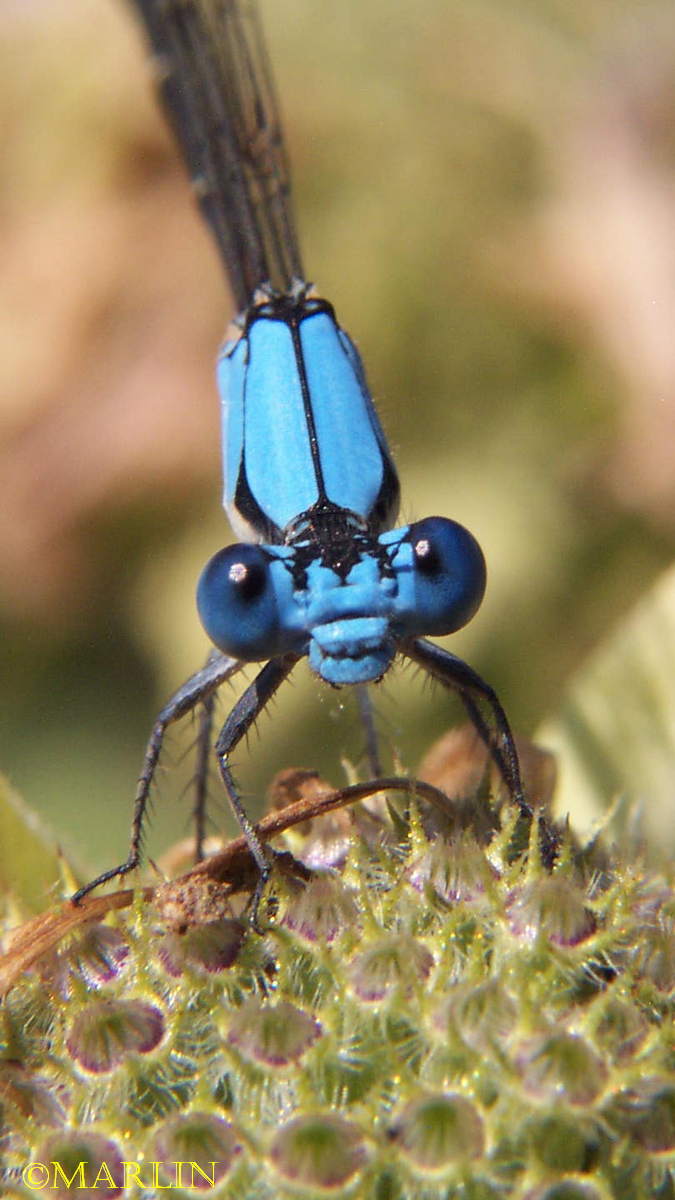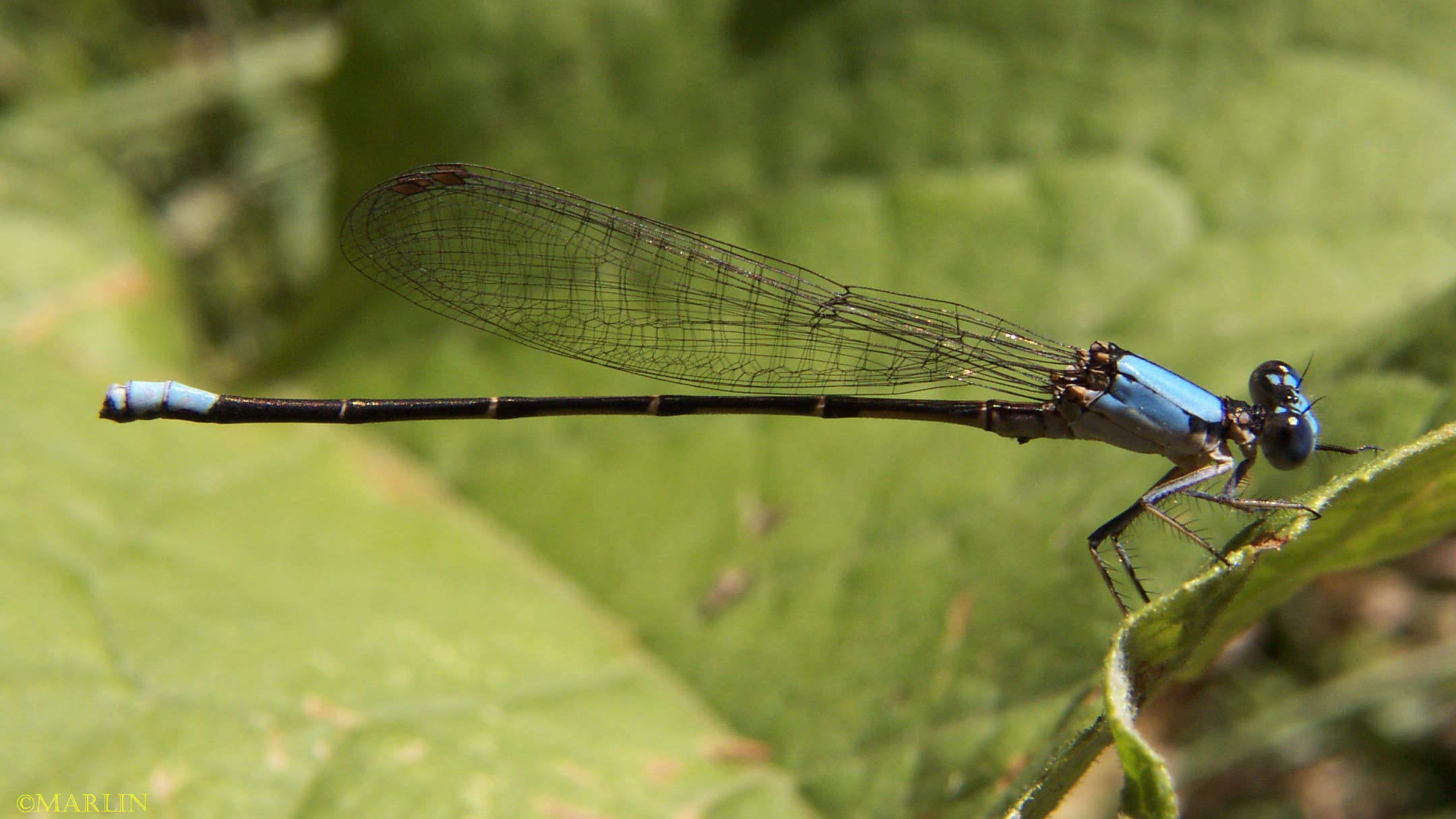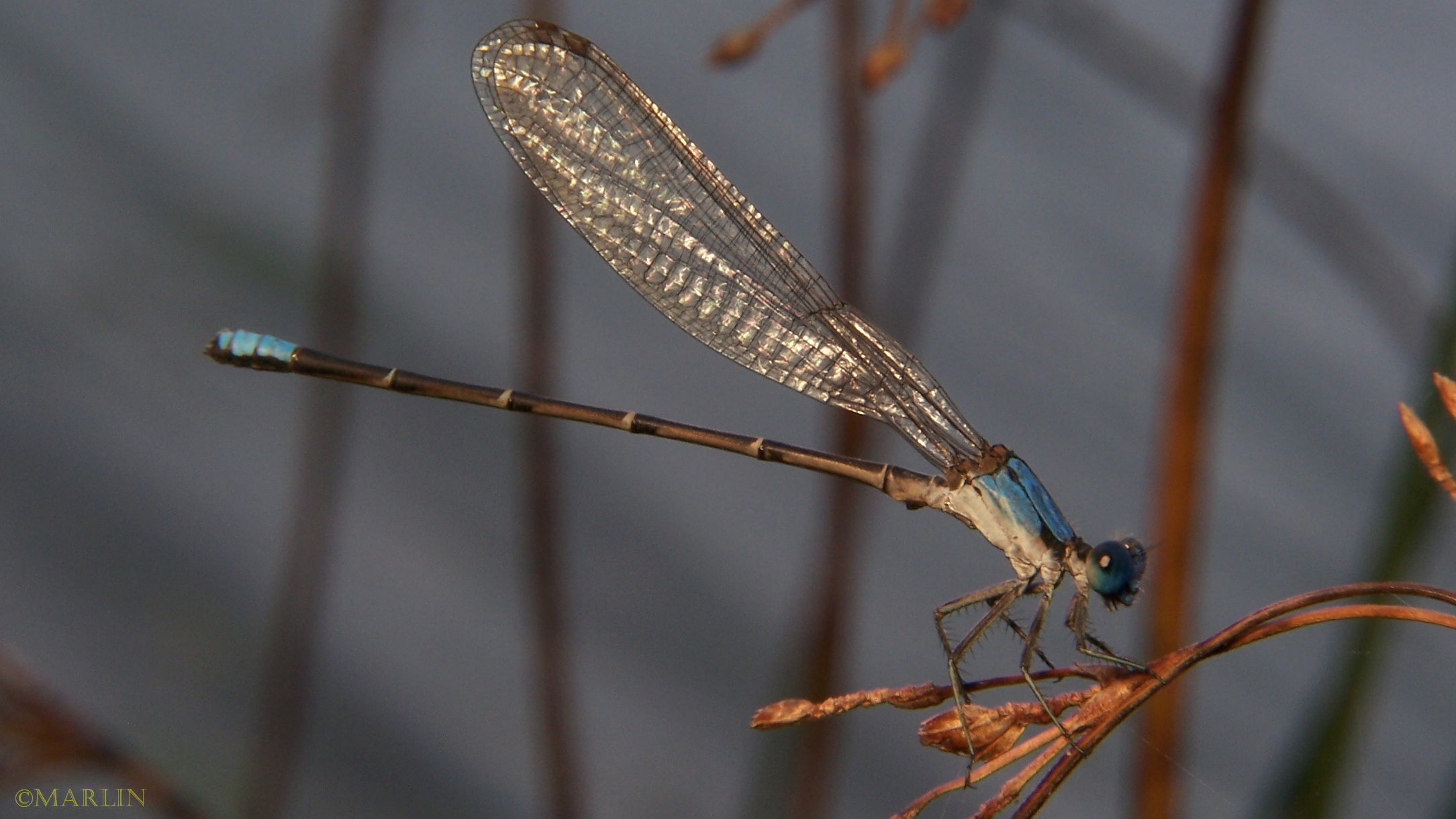Blue-fronted Dancer Damselfly – Argia apicalis
Odonates have excellent vision. Each compound eye is comprised of several thousand elements known as facets or ommatidia. These ommatidia contain light sensitive opsin proteins, thereby functioning as the visual sensing element in the compound eye. But unlike humans, which only have 2 or 3, sometimes 4 opsin proteins, day-flying dragonfly species have four or five different opsins, allowing them to see colors that are beyond human visual capabilities, such as ultraviolet (UV) light. The raptorial front legs combined with some serious ripping mouthparts make these otherwise ethereal creatures fearsome predators. Sometimes they are precision flyers and make a clean, mid-air intercept, but I’ve seen them miss even slowly flying moths repeatedly as well. Often I’ve seen them pounce on resting or nectaring insects.Their large bulbous compound eyes provide a vision field of 300 degrees. This insect needs binocular vision to maintain their predatory flying capture ability.
The raptorial front legs combined with some serious ripping mouthparts make these otherwise ethereal creatures fearsome predators. Sometimes they are precision flyers and make a clean, mid-air intercept, but I’ve seen them miss even slowly flying moths repeatedly as well. Often I’ve seen them pounce on resting or nectaring insects.Their large bulbous compound eyes provide a vision field of 300 degrees. This insect needs binocular vision to maintain their predatory flying capture ability.
Damselflies complete a life cycle in one or two years. The adults mate over the shallow water, sometimes in flight but often while clinging to the exposed portions of weed beds or shoreline vegetation. Immediately after mating, the female will crawl down the vegetation, and ‘into’ the water to lay her eggs on the submerged portion of the vegetation. Once the eggs are laid she will crawl back up the vegetation and repeat the process. When the eggs hatch they do not go through the larva and pupa transformations. The newly hatched damsel is just a smaller version of the later immature stages.
Insects | Dragonflies | Damselflies | Bugs Index | Spiders



